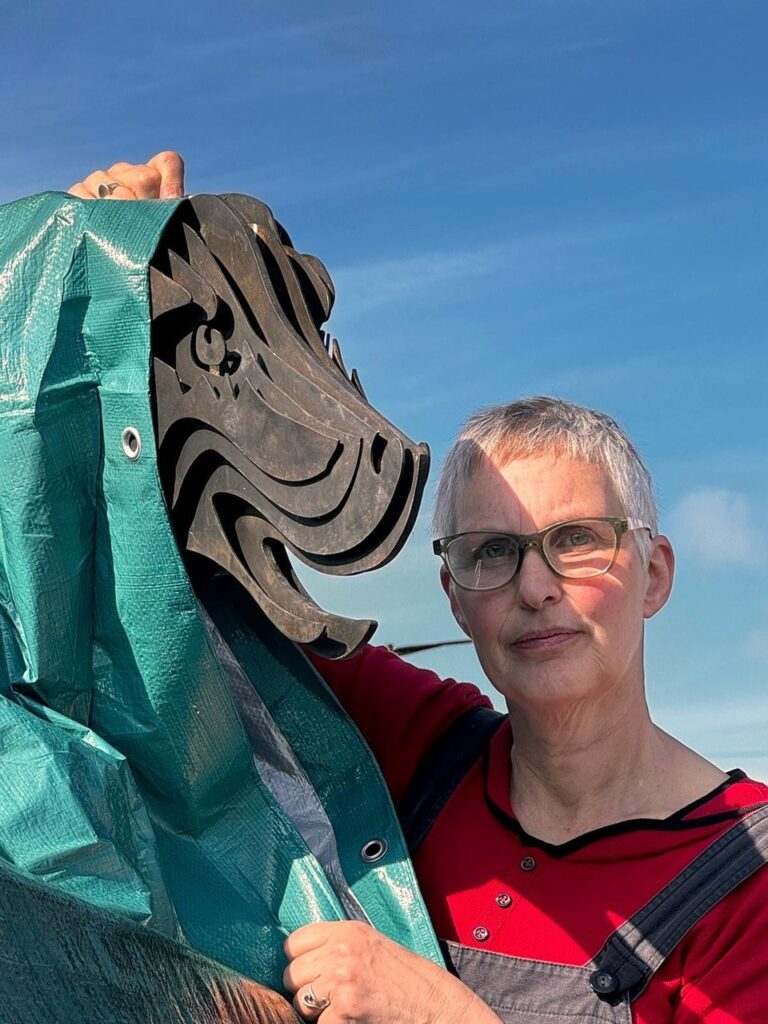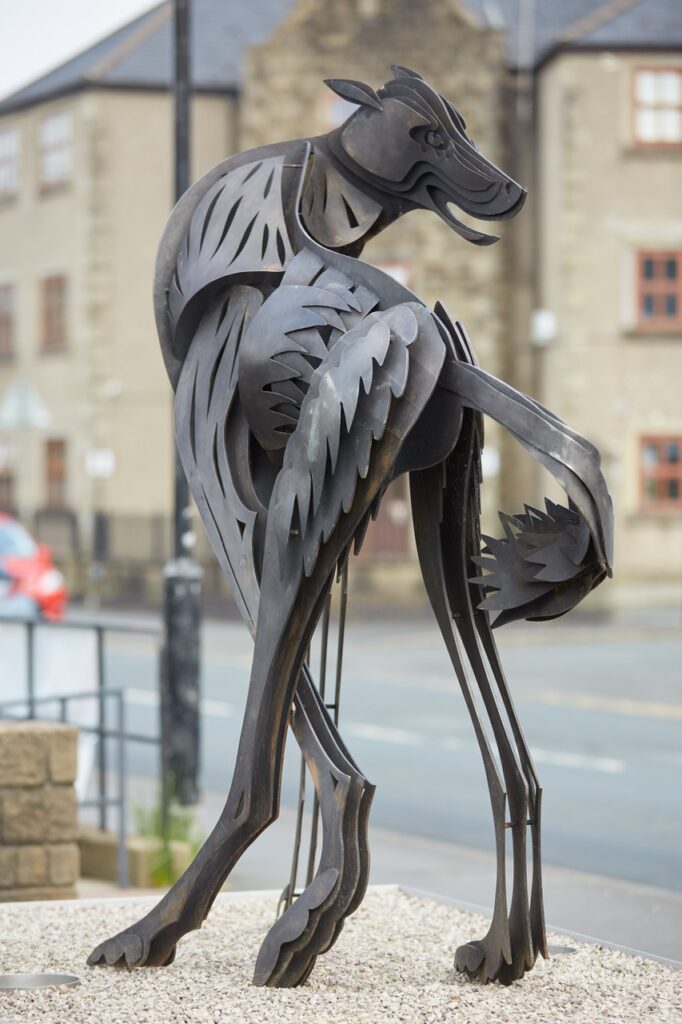Sculptor's new work helps tell Lancashire Witches' story
- Home
- Media Centre
- Spotlight Features
- Sculptor’s new work helps tell Lancashire Witches’ story

#MakeLancashireYours
Lancashire ‘felt like home’ the moment Marjan Wouda arrived. Having been brought up on a dairy farm in the Netherlands, she left at the age of 19 and later went on to study art in London and Manchester. When she was looking for a house with a studio she discovered Lancashire and was immediately at home, in the county that had a constantly changing landscape and industrial heritage, making it the right place for her and her art.
Marjan began sketching as a child, recreating the red/brown breed of cows with their white faces in charcoal, on the farm where she took part in everything from birthing calves to haymaking. Her proximity to animals, wildlife and the earth influenced her art from the beginning. Years later, it was a tutor at college that saw that Marjan’s sketches suggested 3Dimensional forms, which led Marjan to the sculpture studio, where she loved engaging with all kinds of materials, exploring their nature and possibilities.
She now mainly makes sculptures of animals and the underlying theme in her work is human experience, often visiting literature or stories for her starting point. “Animals are used, like characters in a dream or story, to explore and give expression to it. I love their infinitely varied forms and the power of their image.”
Her latest sculpture ‘Dandy’ is the first sculptural representation of a spirit or ‘familiar’ in the public realm. Dandy helps tell the story of the infamous Lancashire Witch Trials of 1612, which saw so-called witches taken from villages across Pendle in Lancashire to be tried at Lancaster Castle, where their fate was sealed and they were condemned to death on the gallows.

Dandy – The inspiration
In 1612, when James Device was interrogated by the local magistrate, he confessed to having a “familiar spirit” whom he named “Dandy”. In fact, he said it was the dog who appeared to him, instructed him and bade him ‘ever after’ to call it “Dandy”. It was believed in those days that witches and cunning folk were assisted by a spirit in the form of an animal or human being. James, who grew up in the household of his grandmother Elizabeth Southern, spoke of a black dog that offered him a means of revenge when he felt wronged.
Marjan set out “..to tell Lancashire’s most compelling story by creating this familiar spirit; imagining what this dog, that could speak to us and magically come to our aid when we needed it, might look like. It had to be larger than life; a potentially dangerous friend – as indeed it turned out to be for our James.”
This portrayal of a familiar connects Clitheroe to its landscape setting in the shadow of Pendle Hill. Clitheroe Castle itself is very likely to have played a part in the story as a stop-over for those on their way to Lancaster Castle and jail. Margaret Pearson, one of the 12 accused in 1612, who is also referred to as the Padiham Witch, was sentenced for bewitching a horse, and made to stand upon the pillory in Clitheroe on 4 successive market days.
Dandy, installed in 2024, puts Clitheroe on the map, making it a not-to-be missed location for visitors interested in the Lancashire Witches.
Learn more about Marjan Woudja here
___________________________________________________
Walk, drive or cycle the Lancashire Witch Trail between Pendle and Lancaster
#MakeLancashireYours